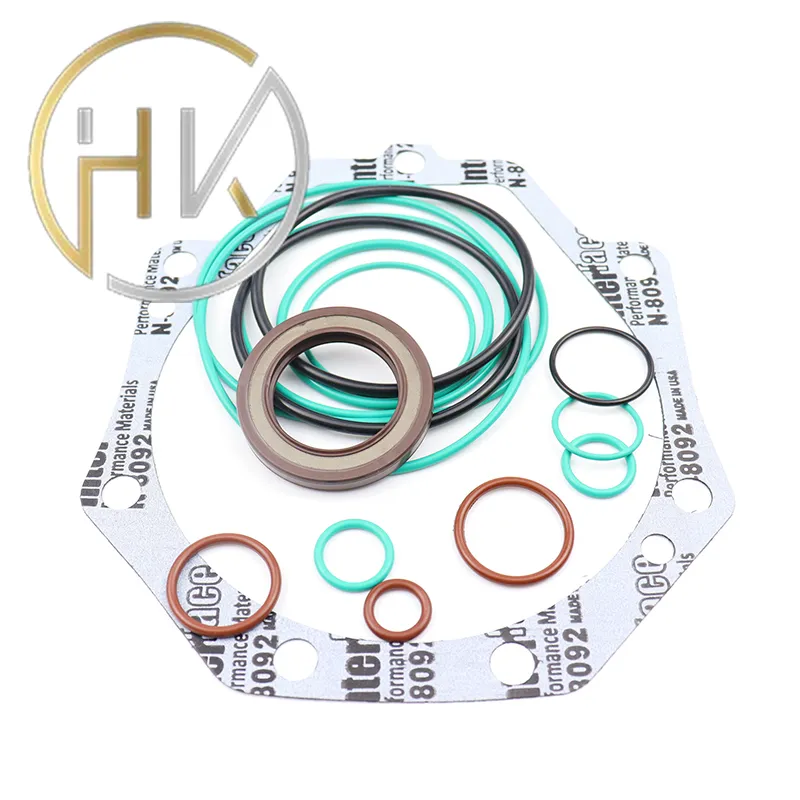Lis . 09, 2024 10:39 Back to list
Choosing the Right Felt Wiper Seals for Your Machinery Needs
Understanding Felt Wiper Seals A Comprehensive Guide
Felt wiper seals are an essential component in various engineering applications, particularly in machinery and automotive sectors. These seals play a crucial role in preventing contaminants from entering sensitive areas while ensuring that lubricants remain contained. This article delves into what felt wiper seals are, their construction, applications, benefits, and installation considerations.
What Are Felt Wiper Seals?
Felt wiper seals are made from dense felt material, typically comprised of wool or synthetic fibers. These seals are designed to wipe the surfaces of shafts or rods as they reciprocate or rotate, effectively removing dust, dirt, and other particulates. Their primary function is to act as a barrier, preventing contaminants from penetrating the areas that require protection, such as bearings and gear systems, thereby enhancing the durability and life expectancy of machinery.
Construction of Felt Wiper Seals
The construction of felt wiper seals involves compressing and needling fibers to create a dense, durable material. The felt is often treated with specially formulated oils or coatings to enhance its resistance to water and other liquids, thereby improving its performance in various environments. Felt wiper seals can be custom-made in different thicknesses and diameters, depending on the specific requirements of the application.
The design often features a flexible structure that allows for effective sealing even under varying conditions, including changes in temperature, pressure, and motion. The felt material's ability to conform to surfaces makes it particularly advantageous for use in dynamic sealing applications.
Applications of Felt Wiper Seals
Felt wiper seals are used in multiple industries, including
1. Automotive In vehicles, they are often found in engine bays, wheel bearings, and other components where lubrication is crucial for performance and longevity. 2. Manufacturing Machinery utilized in manufacturing processes frequently employs felt wiper seals to protect moving parts from particulate matter, ensuring efficient operation. 3. Construction Equipment Heavy equipment relies on these seals to maintain lubrication and prevent wear from dust and debris during operation in rugged environments. 4. Aerospace In aviation, where precision is paramount, felt wiper seals guard essential components against environmental contaminants.
Benefits of Using Felt Wiper Seals
- Effective Contamination Control Felt wiper seals excel at keeping dirt and debris out of critical areas, reducing wear and failure rates.
felt wiper seals

- Low Friction Due to their soft texture, these seals create minimal friction, facilitating smooth movement in mechanical systems.
- Cost-Effectiveness Felt wiper seals are relatively inexpensive to produce and maintain, providing an economical solution for many sealing requirements.
- Versatility The adjustable nature of felt seals makes them suitable for various applications, from high-speed machinery to low-stress environments.
Installation Considerations
When installing felt wiper seals, several factors should be taken into account
- Surface Preparation Ensure that the surfaces where the seals will be installed are clean and free from debris or damage.
- Proper Alignment Misalignment can lead to premature wear and failure, so it’s vital to install the seals accurately.
- Environmental Conditions Consider the operating conditions, such as exposure to chemicals or extreme temperatures, which can affect the performance of the felt.
- Regular Maintenance Periodic inspection and maintenance of felt wiper seals are recommended to ensure optimal performance, particularly in high-wear applications.
Conclusion
Felt wiper seals are a vital component in many mechanical systems, offering protection against contaminants and aiding in the maintenance of lubrication. With their versatility, effectiveness, and cost-efficiency, felt wiper seals remain a popular choice across various industries. Understanding their construction, applications, and installation tips empowers engineers and technicians to make informed decisions, ultimately enhancing machinery performance and reliability.
-
Unlocking the Potential of Hydraulic Systems with Essential Sealing Solutions
NewsAug.06,2025
-
Unleash the Power of Your Hydraulic Systems with Our Premium Seal Kits
NewsAug.06,2025
-
Specialized Hydraulic Seal Kits for Breakers, Pistons, and Presses
NewsAug.06,2025
-
Revitalize Hydraulic Systems with Premium Repair and Seal Kits
NewsAug.06,2025
-
Fortify Your Cylinders with Premium Sealing Solutions
NewsAug.06,2025
-
Elevate Hydraulic System Reliability with Specialized Seal Kits
NewsAug.06,2025
-
TCN Oil Seal Metal Ring Reinforcement for Heavy Machinery
NewsJul.25,2025
Products categories
















